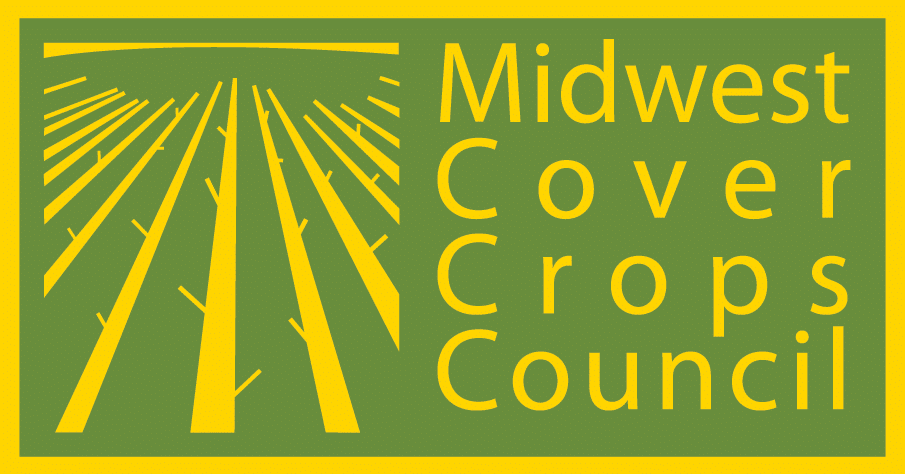Getting Started
Let us help you with getting started with cover crops!
We've added our best tools and recommendations below.
WHAT ARE COVER CROPS?
Cover crops are plants seeded into agricultural fields, either within or outside of the regular growing season, with the primary purpose of improving or maintaining ecosystem quality. The goal of the Midwest Cover Crops Council (MCCC) is to facilitate widespread adoption of cover crops throughout the Midwest, to improve ecological, economic, and social sustainability.
WHAT DO COVER CROPS DO FOR FARMERS?
- Reduce erosion
- Improve soil quality, through increases in
- Porosity (reduced compaction)
- Soil organic matter
- Water holding capacity
- Beneficial microbes
- Micro- and macro-invertebrates
- Retain nutrients that would otherwise be lost
- Add nitrogen through fixation (leguminous cover crops)
- Combat weeds
- Break disease cycles
WHAT DO COVER CROPS DO FOR THE ENVIRONMENT?
- Enhance biodiversity
- Increase soil infiltration, leading to less flooding, leaching, and runoff
- Create wildlife habitat
- Attract honey bees and beneficial insects

TERMINATION
Termination is an important factor in planning and executing your cover crop.
PLANTING
Establishing cover crops is a big challenge. Let's review the latest information for planting.
EQUIPMENT
There are a wide variety of options for planting and managing cover crops. Learn more about them.
MANAGEMENT
Cover crops may require specific management to meet the desired goals for use.Cover Crop Recipes
These publications are intended to provide a starting point for farmers who are new to growing cover crops. With experience, farmers may fine-tune the use of cover crops for their systems.
Additional states coming soon. Select a state below to learn more about each one!
- MCCC 109 – Post Corn, Going to Soybean: Use Cereal Rye
- MCCC 110 – Post Soybean, Going to Corn: Use Cereal Rye
- MCCC 111 – Post Wheat, Going to Soybean or Corn: Use Oats and Radish Mix
- MCCC 123 – Post Corn Silage, Going to Corn: Use Cereal Rye
- MCCC 124 – Post Corn Silage, Going to Soybean: Use Cereal Rye
- MCCC 132 - Post Dry Bean: Use Winter Cereal Grain (Wheat or Cereal Rye)
COVER CROP RECIPES FOR FIRST-TIME COVER CROP USERS IN INDIANA (applicable to corn-soybean rotation in eastern Cornbelt)
Presenters: Eileen Kladivko and Bill Johnson – Purdue University, Barry Fisher – USDA-NRCS
Cover crops can be a useful conservation practice for improving soil health, scavenging and recycling nutrients, reducing erosion, and contributing to more resilient cropping systems over the long term. Many producers are interested in learning more about cover crop options and trying cover crops in their operation, but they are sometimes overwhelmed by the many different choices and options for cover crops. This presentation is aimed at providing crop advisors and producers with some simple “recipes” for cover crop use for first-time cover crop adopters. These recipes are intended to provide a relatively simple, low-risk strategy for integrating cover crops into a corn-soybean rotation in Indiana and the eastern Cornbelt. The recipes include details on the specific cover crops, seeding rates and dates, and termination guidance and should be useful to both the producer and the crop advisor with limited cover crop experience.
Articles to Get Started
Cover Crops 101
Virginia Janzen and Dr. Yvonne Lawley - University of Manitoba Published by the Seine Rat Roseau Watershed District March 2022...
Illinois Cover Crop Recipe – Post Soybean, Going to Corn: Use Oats/Radish
Midwest Cover Crops Council (MCCC-106) This publication is intended to provide a starting point for farmers who are new to...
Minnesota Cover Crop Recipe – Post Corn Silage, Going to Soybean: Use Cereal Rye
Midwest Cover Crops Council (MCCC-131) Download PDF This publication is intended to provide a starting point for farmers...
Minnesota Cover Crop Recipe – Post Corn Silage, Going to Corn: Use Cereal Rye
Midwest Cover Crops Council (MCCC-130) Download PDF This publication is intended to provide a starting point for farmers who are...
Ontario Cover Crop Recipe - After Processing Vegetables: Use an Oat-Radish Mix
Midwest Cover Crops Council (MCCC-129) University of Guelph (SAG-FS-21-003) Download PDF This publication is intended to provide a starting point...
Ontario Cover Crop Recipe - After Wheat, Going to Corn or Soybean: Use an Oat-Radish Mix
Midwest Cover Crops Council (MCCC-128) University of Guelph (SAG-FS-21-003) Download PDF This publication is intended to provide a starting point...
Ontario Cover Crop Recipe - Wheat Going to Corn: Underseed Red Clover
Midwest Cover Crops Council (MCCC-127) University of Guelph (SAG-FS-21-001) Download PDF This publication is intended to provide a starting point...
Evaluation of Cool Season Cover Crops in the North Central Region
NRCS, Plant Materials Program May 2020 Evaluation of Cool Season Cover Crops in the North Central RegionDownload DOWNLOAD Source link...
Ontario Cover Crop Recipe - Post Corn Silage, Going to Soybean: Introduce a Fall Rye Cover Crop
Midwest Cover Crops Council (MCCC-125) University of Guelph (SAG-FS-20-001) Download PDF This publication is intended to provide a starting point...
